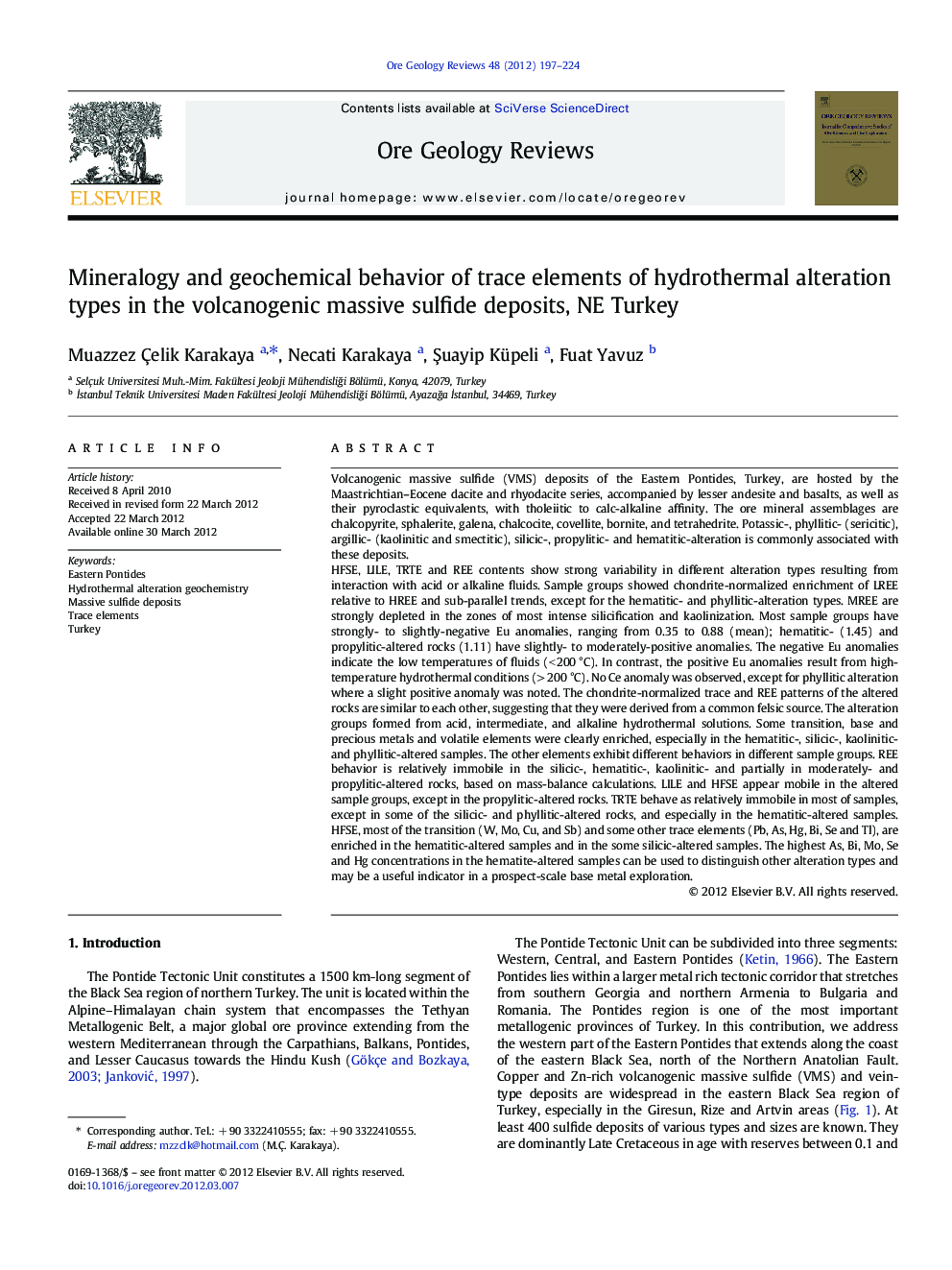| کد مقاله | کد نشریه | سال انتشار | مقاله انگلیسی | نسخه تمام متن |
|---|---|---|---|---|
| 6435942 | 1637255 | 2012 | 28 صفحه PDF | دانلود رایگان |

Volcanogenic massive sulfide (VMS) deposits of the Eastern Pontides, Turkey, are hosted by the Maastrichtian-Eocene dacite and rhyodacite series, accompanied by lesser andesite and basalts, as well as their pyroclastic equivalents, with tholeiitic to calc-alkaline affinity. The ore mineral assemblages are chalcopyrite, sphalerite, galena, chalcocite, covellite, bornite, and tetrahedrite. Potassic-, phyllitic- (sericitic), argillic- (kaolinitic and smectitic), silicic-, propylitic- and hematitic-alteration is commonly associated with these deposits.HFSE, LILE, TRTE and REE contents show strong variability in different alteration types resulting from interaction with acid or alkaline fluids. Sample groups showed chondrite-normalized enrichment of LREE relative to HREE and sub-parallel trends, except for the hematitic- and phyllitic-alteration types. MREE are strongly depleted in the zones of most intense silicification and kaolinization. Most sample groups have strongly- to slightly-negative Eu anomalies, ranging from 0.35 to 0.88 (mean); hematitic- (1.45) and propylitic-altered rocks (1.11) have slightly- to moderately-positive anomalies. The negative Eu anomalies indicate the low temperatures of fluids (< 200 °C). In contrast, the positive Eu anomalies result from high-temperature hydrothermal conditions (> 200 °C). No Ce anomaly was observed, except for phyllitic alteration where a slight positive anomaly was noted. The chondrite-normalized trace and REE patterns of the altered rocks are similar to each other, suggesting that they were derived from a common felsic source. The alteration groups formed from acid, intermediate, and alkaline hydrothermal solutions. Some transition, base and precious metals and volatile elements were clearly enriched, especially in the hematitic-, silicic-, kaolinitic- and phyllitic-altered samples. The other elements exhibit different behaviors in different sample groups. REE behavior is relatively immobile in the silicic-, hematitic-, kaolinitic- and partially in moderately- and propylitic-altered rocks, based on mass-balance calculations. LILE and HFSE appear mobile in the altered sample groups, except in the propylitic-altered rocks. TRTE behave as relatively immobile in most of samples, except in some of the silicic- and phyllitic-altered rocks, and especially in the hematitic-altered samples. HFSE, most of the transition (W, Mo, Cu, and Sb) and some other trace elements (Pb, As, Hg, Bi, Se and Tl), are enriched in the hematitic-altered samples and in the some silicic-altered samples. The highest As, Bi, Mo, Se and Hg concentrations in the hematite-altered samples can be used to distinguish other alteration types and may be a useful indicator in a prospect-scale base metal exploration.
Journal: Ore Geology Reviews - Volume 48, October 2012, Pages 197-224